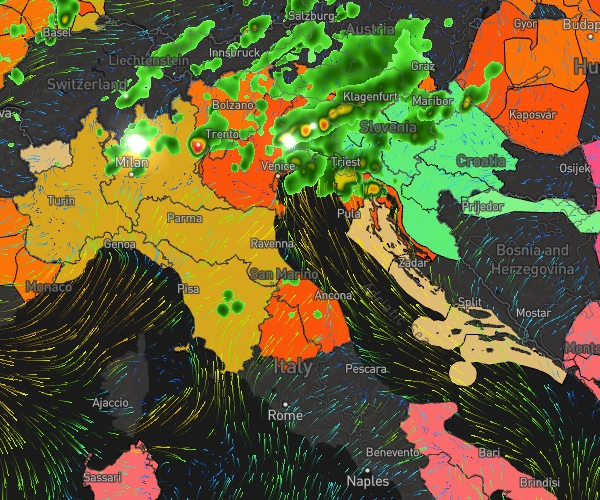Bringing hyperlocal weather data to the City of Helsinki
12.5.2023//Product, News, Wx Beacon, Meteorology
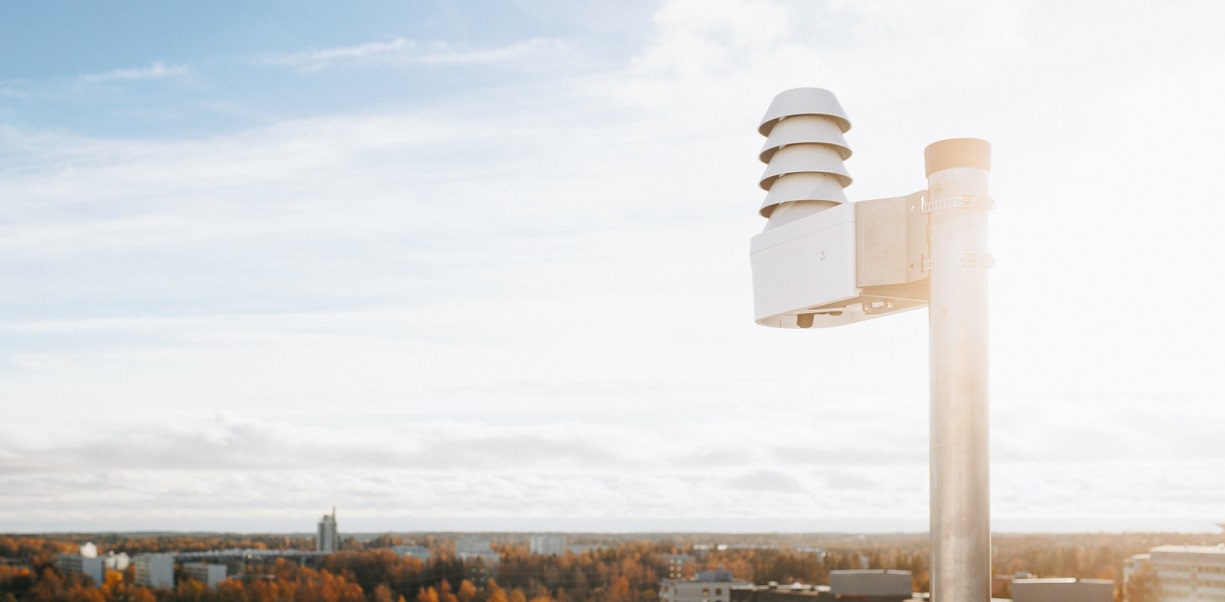
How can a building leverage weather data to optimize its energy consumption?
Buildings account for a staggering 30% of total final energy consumption; thus, optimizing their energy usage holds far greater significance than most of us can imagine. A substantial 40% of the energy consumed by buildings globally is dedicated to the vital functions of space heating and cooling.
Now, picture a scenario where we could trim down that figure, even by a small percentage. The potential impact is nothing short of immense - and it lies within our grasp. How? Through smart decision-making powered by advanced weather forecasting. Business Helsinki decided to partner with Vaisala Xweather to test this exciting concept with a pilot at the beautiful Metropolia University campus in East Helsinki.
How can we optimize a building’s energy consumption with weather data? We start by gathering hyperlocal, hyperaccurate data - right at the source. That source is where we find ourselves on this beautiful autumn day: Atop a roof of a building on the Metropolia University campus, observing the installation of a Vaisala TempCast sensor. The sensor is a crucial element of Wx Beacon - a hyperlocal weather solution that offers location-specific forecast powered by advanced machine learning capabilities.
The sensor will collect weather data for this exact location, feeding into algorithms to generate improved hyperlocal weather forecasts. The building’s automation system will use these forecasts to automatically and proactively adjust its heating and cooling.
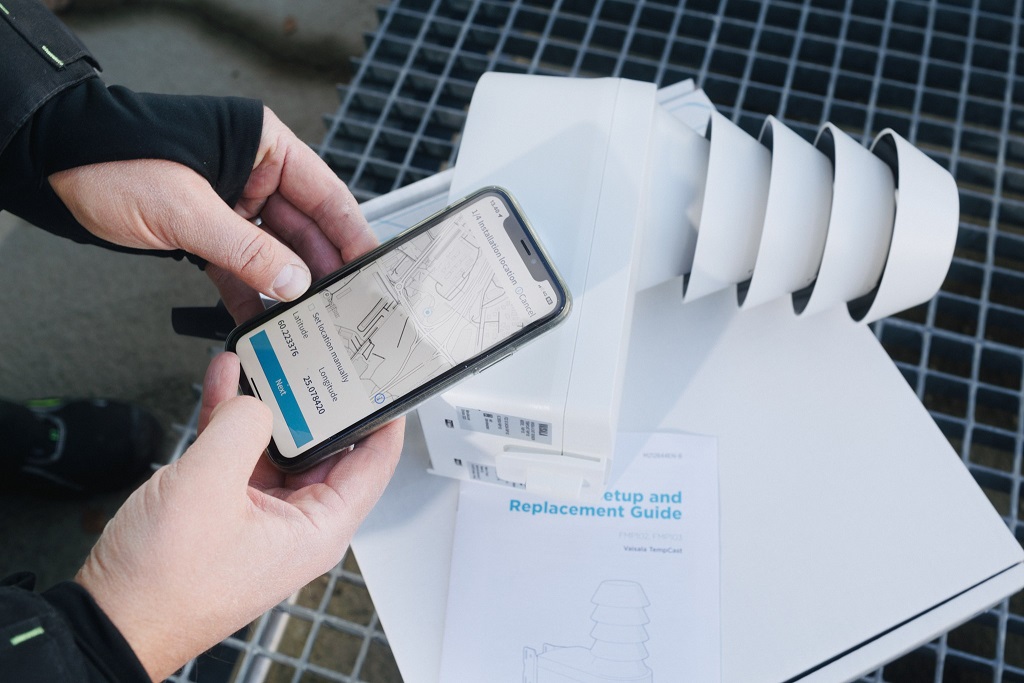
Sensor activation is quick and painless with the mobile app
This way, the sesnsor "teaches" the building automation system and tells it precisely what to expect and can adjust its heating and cooling operations in an optimal and proactive way.
15 minutes and the installation process is complete: Quick and straightforward. The sensor requires neither a power supply nor additional infrastructure - and its sleek design blends seamlessly into its new environment, dominated by a large cluster of solar panels.
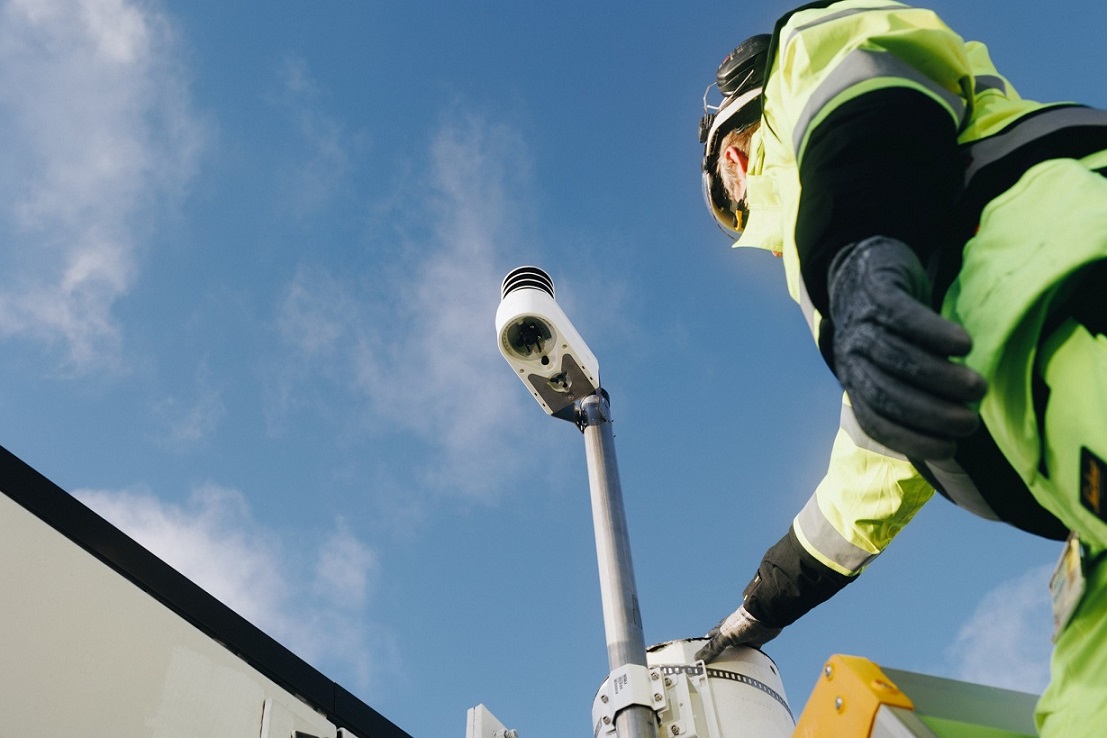
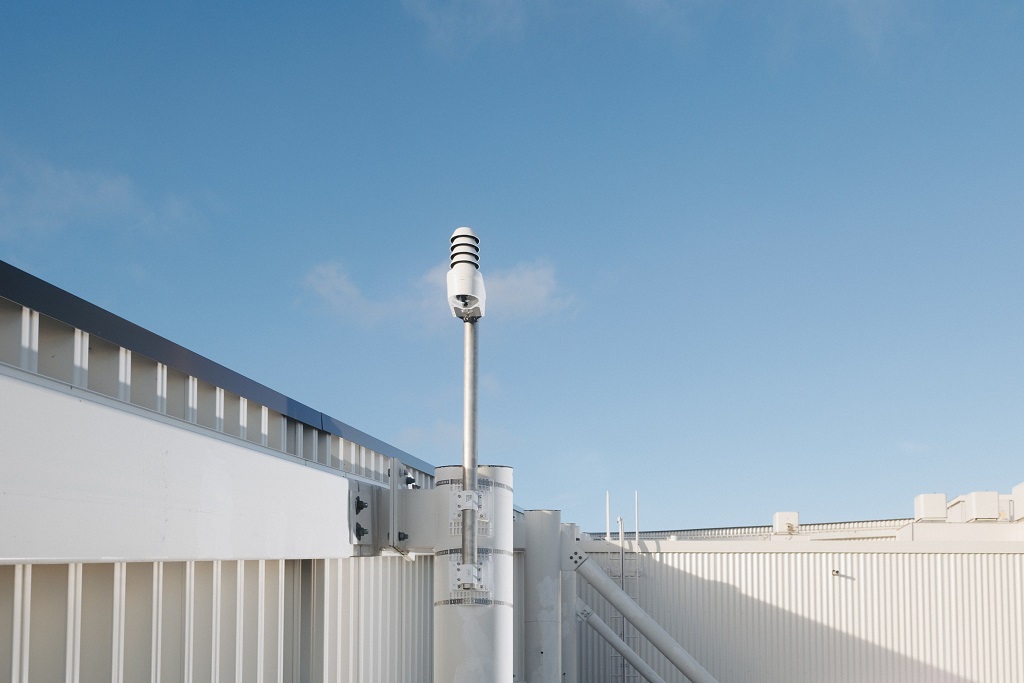
I admit, the sensor does look cool - but beyond its design, what makes it so special? And just how exactly does it contribute to enhanced weather forecasts? I took a moment to talk with Juuso Pokkinen, Solutions Product Marketer at Vaisala Xweather, to find out.
JP: “At Vaisala Xweather we use Vaisala Cast Sensors to acquire local data. These sensors use the same measurement technologies trusted by meteorological agencies worldwide. Entirely wireless, battery-powered, and constantly connected to the Xweather cloud platform where our weather models run, these sensors are an optimal solution for those not interested in building and maintaining their own sensor network. Then, our proprietary technology, Xcast, utilizes this local sensor data to reduce errors and enhance the accuracy of weather predictions, resulting in forecasts that outperform all other available predictions.”
Wx Beacon utilizes this local sensor data to reduce errors and enhance the accuracy of weather predictions, resulting in forecasts that outperform all other available predictions.
When asked to share some numbers on the expected forecast improvements, Juuso throws an impressive number on the table:
JP: “For one of our clients, we managed to reduce the number of large errors in temperature forecasts by up to 74% and improve the average forecasting accuracy by 36% compared to the best available alternative. What’s really exciting is that this level of results is feasible - even in Finland, where the bar is set very high by the already-excellent public weather infrastructure.”
Sounds convincing and very impressive. So, what’s the reason this technology is not widely utilized?
JP: “Though using hyperlocal measurements is undeniably the most effective way to improve location-based forecasting, owning and maintaining a weather sensor network – let alone housing and using the produced data to generate these forecasts – can be complicated and quite costly, causing many to have second thoughts on implementing this technology.
To address this, we developed Xweather Insight. The platform allows any organization to access enhanced weather forecasts from their desired locations as a subscription service. This allows them to benefit from highly accurate weather forecasts without the need to own and operate sensor networks, which can be costly and complex."
Tell us why this particular building was chosen for the pilot and what you hope to learn from the project?
JP: “This is the very first time we’re testing the solution to optimize a building’s heating and cooling. The building where we are piloting now was built just a few years ago with the highest energy efficiency standards, making it a suitable location for us to further enhance energy efficiency. When testing new solutions and applications, the value of performing tests in real environments with real partners is something that cannot be understated. Testbed Helsinki is all about creating a thriving urban environment that actively encourages experimentation and innovation, and that’s what we are doing here. It’s a prime example of how a city can actively drive innovation. This unique platform for companies and R&D initiatives helps turn ideas into reality while contributing to the well-being of Helsinki’s citizens.”
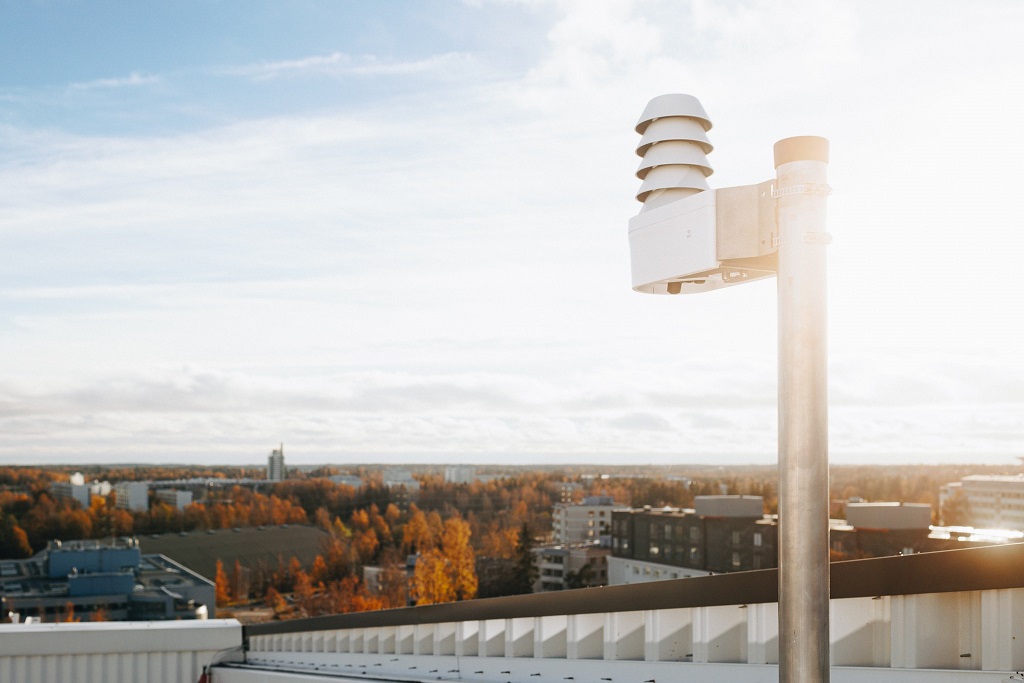
I believe it’s safe to assume there are plenty of other use cases that can benefit from enhanced weather forecasts. Where do you see the most potential, and is already it being explored?
JP: “Indeed. Weather is a major factor impacting businesses in many sectors; yet it is often completely overlooked. In addition to buildings, we see huge potential in - and already have customers in - district heating and renewable energy production. These customers use improved weather data to refine both their energy demand and production forecasts.
We are also excited about the potential of using data to optimize the usage of electricity transmission networks (Dynamic Line Rating, or DLR) - and even avoid the need to build additional transmission capacity in some cases.”
Once activated via a smartphone, the sensor instantly starts collecting data - and the magic begins. TempCast will feed hyperlocal data to the algorithms throughout the year, "teaching" the models to create more accurate forecasts. Stay tuned for the first results of the pilot in summer 2024!
